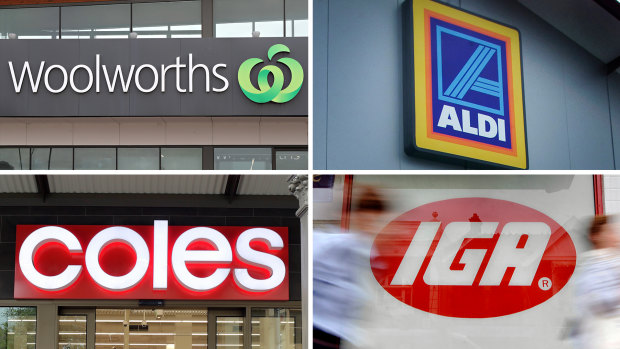This was published 8 months ago
Opinion
Australians are mad at the supermarkets, but not mad enough to shop elsewhere
Shane Wright
Senior economics correspondentThe old saying that you can drag a horse to water but can’t make it drink should be updated.
No matter what you do to encourage Australian shoppers to fill their trolleys with cheap groceries, we keep going back to the same supermarket duopoly.

Consumers have to take action if they are to put pressure on our big supermarkets.Credit: Sydney Morning Herald
The Australian Competition and Consumer Commission’s decision to take on Coles and Woolworths, accusing them of misleading millions of customers with their pricing practices, generated the anger, the hand-wringing and disgust you’d expect.
In the middle of a cost-of-living crisis, which has forced many Australians to charity organisations for the first time, the companies’ “Down Down” and “Prices Dropped” slogans are alleged to have had only a passing acquaintance with the truth.
As former ACCC boss Allan Fels noted in these pages, a particularly galling issue was that the alleged price manipulation was on day-to-day staples such as breakfast cereals, cat food, soft drink and toothpaste. High-end (and more profitable) goods were seemingly not affected.
What’s seriously impressive in all of this is that the ACCC action was driven by countless complaints from shoppers, who told the regulator of their concerns. Citizen-led competition regulation at its finest.
So you’d think, given the thousands of people making complaints to the ACCC or pointing out the rort on social media, Australians would have abandoned the two majors in droves. But what’s nagging me is that despite this going on in front of our eyes, the supermarkets went about their business without a hit to their bottom lines.
Like lemmings, we have continued to file through the doors of Coles and Woolies whingeing, but not changing our actions.
New research from the e61 Institute shows that even where there is competition, Australian shoppers are likely to keep going back to the same supermarket. And despite the furore of recent weeks, those supermarkets know that we will continue to go back because – to be blunt – we can’t be arsed changing our behaviour.
To see just how concentrated the sector is, down to the suburb or town level, while also determining whether Australians shop around for the best deal, e61’s Matthew Elias linked bank transaction data from shoppers to individual store locations across the entire country.
His findings are alarming. Every local market examined had a concentration that, according to Elias, would raise “potential competition concerns” within the ACCC. In 95 per cent of markets, there’s so little competition that it would be considered “highly concentrated” under the US Department of Justice threshold for concern.
Unsurprisingly, the highest concentration is in country towns, where there is often just one supermarket option. I grew up in such a town – the choice was the local Woolies or a 100-kilometere trip to the nearest regional centre with a selection of supermarkets. In the regions, people truly are at the mercy of their local supermarket.
But the data also revealed that 70 per cent of the markets in suburban Sydney and Canberra are more concentrated than the statewide average.
So while country folk have almost no choice, plenty of people in parts of at least two of our major cities face the same situation (without the 100-kilometere trip to a competitor).
More concerning, even in areas where three or four of the major supermarkets have a presence, Coles or Woolies (or both) are so dominant that it doesn’t feel like there is competition from a consumer perspective.
In other words, there are options, we’re just not taking them.
Elias found that within any given month, 76 per cent of shoppers head to either Coles or Woolies for their primary shop. Almost every one of those shoppers goes to the same store, month after month after month. Even when customers do decide to branch out and give competitors a chance, they’re unlikely to venture past the two – moving from Coles to Woolies, or vice versa.
Ellis calls this consumer inertia, but it could also be described as a loyalty tax. Some might call it a habit, ingrained down generations. To a retailer, this is financial addiction – replace the nicotine hit of a cigarette for a bit of Coles radio or a Woolies muffin.
If you want the latest collection of comic-book heroes or a $10 discount for every $2000 you spend, knock yourself out. That’s your choice. But demanding that politicians do “something” about high-priced canned soup or Tim Tams when we can’t be bothered to head to a competitor a few hundred metres away is a sure way to disappointment.
There are major competitive problems across the Australian economy. From airlines to supermarkets and banks, we pay a price – be it higher costs or a lack of productivity from firms that realise they don’t have to try too hard to keep their customers happy.
Yet as consumers, we have to also do our part. Otherwise, we’ll end up just dehydrated donkeys.
Shane Wright is a senior economics correspondent.
The Opinion newsletter is a weekly wrap of views that will challenge, champion and inform your own. Sign up here.